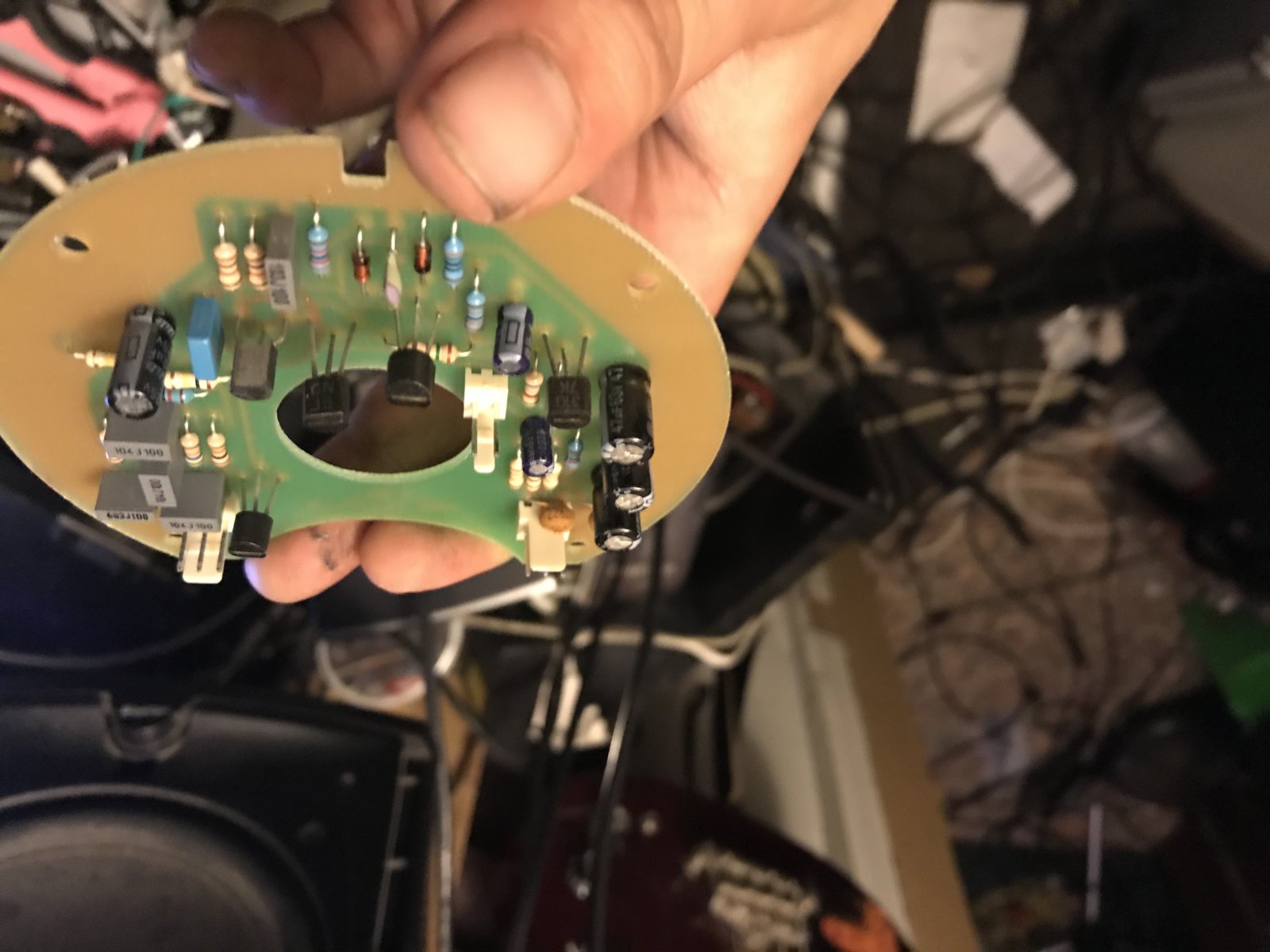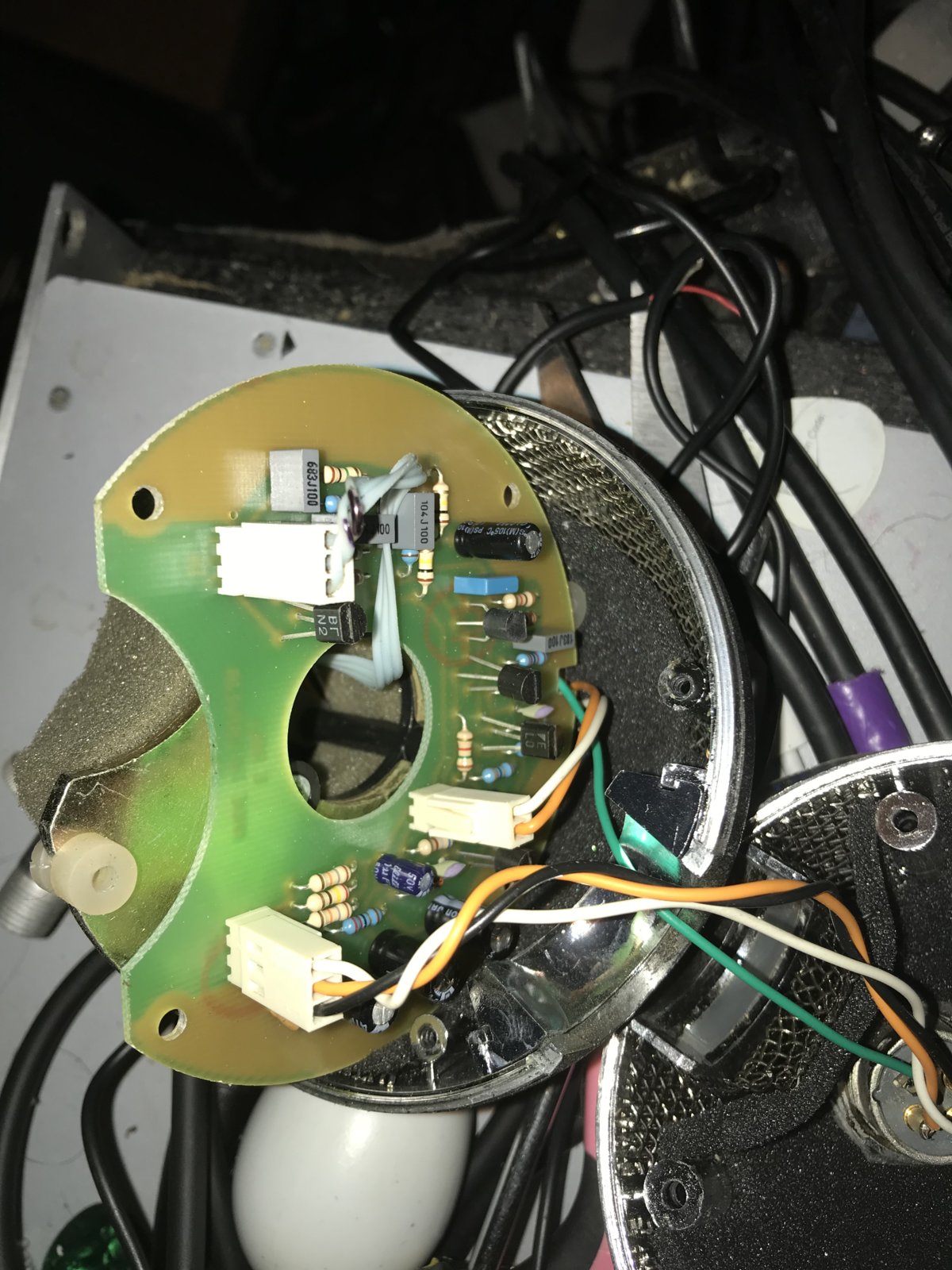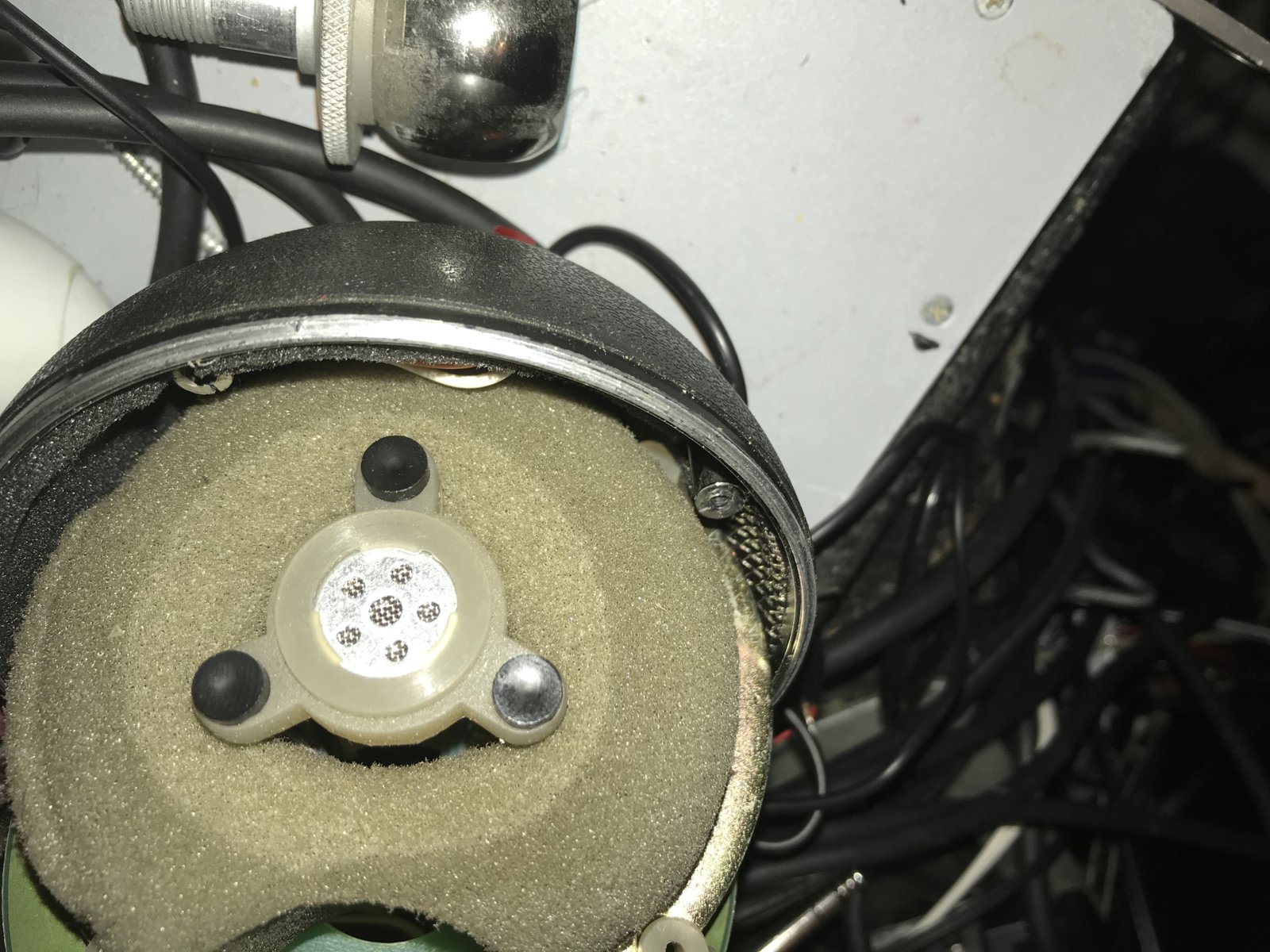I have a blue 8 Ball LDC mic that cost me nothing and that I’m not very keen on. I recorded with it a couple of times on vox, snare and washtub bass I came to the conclusion that it wasn’t completely useless but compared to the mics I have which aren’t multi thousand dollar mics by any means, more like 200-400$ for the main 4-5 I use and then from 120$-and under for the SM57’s and a couple of SDC’s. I decided the other day to take it apart and see what is cooking under the hood, having some basic audio DIY knowledge having built a pedal or two and fixed a number things with a soldering iron, even pulled off some easy mods, I figured I could at least access if there’s things that can be improved upon. One of the first things I noticed when I plug this mic in is its noise floor is fairly high which I think is probably because it is poorly shielded with only a layer of of wire mesh like you can see in the pictures. As far as the circuit can anyone tell me if there’s any room for improvement and what they would do in my shoes?m decent enough with a soldering iron and willing to order some better components. Thanks again, cheers!
Comments
Hey welcome Matt, Boswell told the truth, the ball mics from bl
Hey welcome Matt,
Boswell told the truth, the ball mics from blue are very poor sounding. And as far as LDC, the capsule is small compared to other common capsule.
Most mic mod starts with the capsule, if you want it to be warmer with softer HF, a RK47 would be better but fitting it in the mic casing might not be possible.
Microphone-parts is a great place to start DIY because they supply everything you need (except tools) and they include very detailed manuals.
Saddly they don't have anything for the ball 8.
The only Blue mic they have a mod for is this one : https://microphone-parts.com/pages/blue-bluebird-microphone-mods
Better parts won't cure badly designed circuit. If it had a transformer, it would be an easy part to swap.
I wonder if this mic is worth modding at all, unless you want to learn more and experiment without fear of blowing it up ;)
I built 2 complete kits from microphone-parts and they are both ranked in my top choices on projects (T47 and T12)
My C1 Mod get some use too, specially for voice over, it has an 87 flavor (while still being different)







It's not a very good microphone, largely because of its scooped
It's not a very good microphone, largely because of its scooped frequency response and high internal noise level. The gimmicky ball housing is actually an impediment for accurate usage, as it masks the real position of the capsule. It could be that the best use of your audio DIY knowledge is to re-assemble the microphone and put it away in a cupboard.
Going on from there, however, if you are keen to try your hand at constructing microphone circuit boards, there are kits available whose end result is a much better-sounding unit than the 8-Ball. As an example, our own contributer pcrecord posted a thread and video about modifying a Studio Projects C1 microphone using a kit from microphone-parts.com